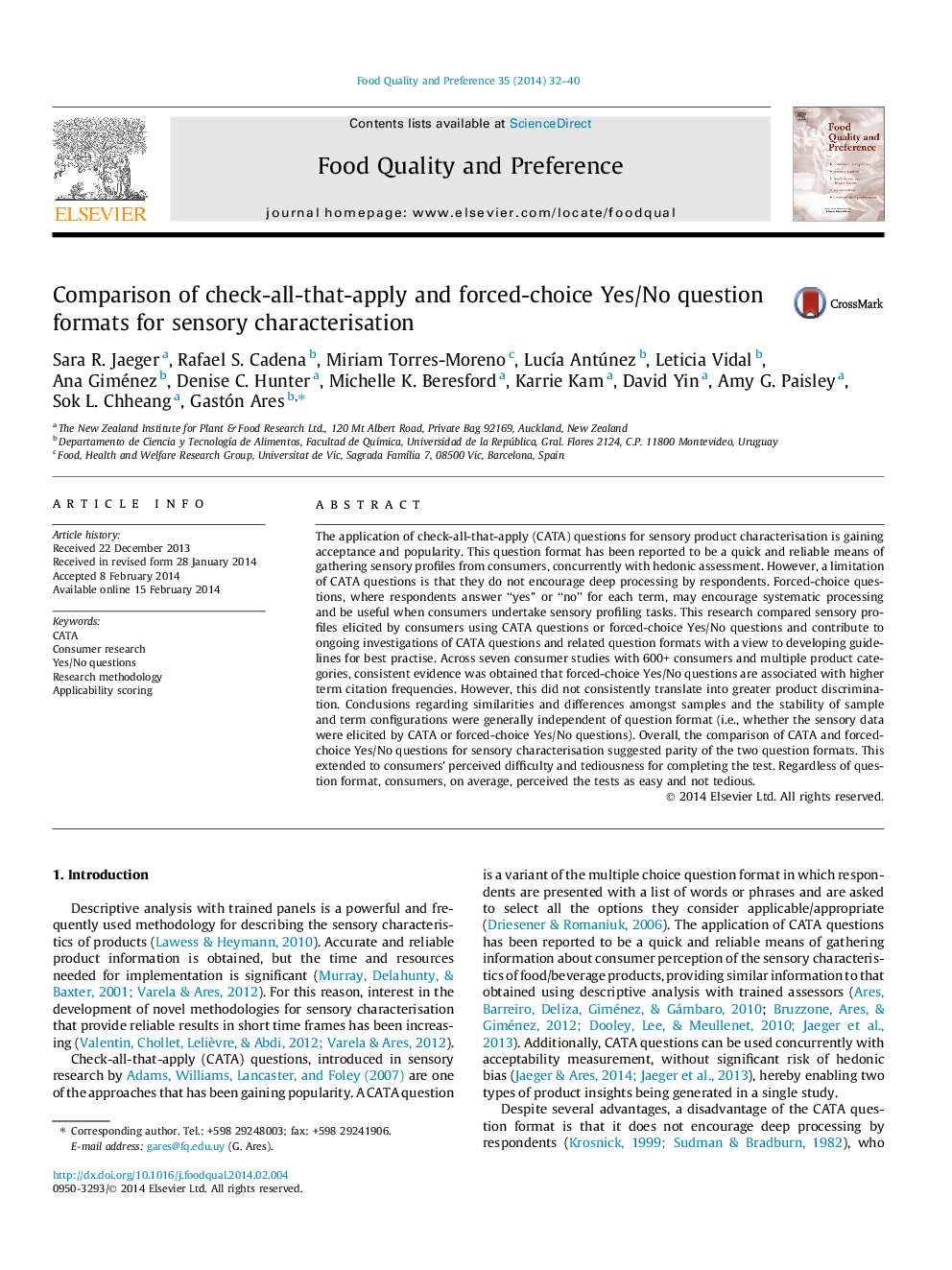| کد مقاله | کد نشریه | سال انتشار | مقاله انگلیسی | نسخه تمام متن |
|---|---|---|---|---|
| 4317220 | 1613162 | 2014 | 9 صفحه PDF | دانلود رایگان |

• CATA and forced-choice Yes/No questions were compared across 7 consumer studies.
• CATA and forced-choice questions produced similar sensory spaces.
• Frequencies of term use were higher for forced-choice Yes/No than for CATA questions.
• Stability of sample and term configurations was similar for CATA and forced-choice questions.
• Evidence of superiority of forced-choice questions relative to CATA was not obtained.
The application of check-all-that-apply (CATA) questions for sensory product characterisation is gaining acceptance and popularity. This question format has been reported to be a quick and reliable means of gathering sensory profiles from consumers, concurrently with hedonic assessment. However, a limitation of CATA questions is that they do not encourage deep processing by respondents. Forced-choice questions, where respondents answer “yes” or “no” for each term, may encourage systematic processing and be useful when consumers undertake sensory profiling tasks. This research compared sensory profiles elicited by consumers using CATA questions or forced-choice Yes/No questions and contribute to ongoing investigations of CATA questions and related question formats with a view to developing guidelines for best practise. Across seven consumer studies with 600+ consumers and multiple product categories, consistent evidence was obtained that forced-choice Yes/No questions are associated with higher term citation frequencies. However, this did not consistently translate into greater product discrimination. Conclusions regarding similarities and differences amongst samples and the stability of sample and term configurations were generally independent of question format (i.e., whether the sensory data were elicited by CATA or forced-choice Yes/No questions). Overall, the comparison of CATA and forced-choice Yes/No questions for sensory characterisation suggested parity of the two question formats. This extended to consumers’ perceived difficulty and tediousness for completing the test. Regardless of question format, consumers, on average, perceived the tests as easy and not tedious.
Journal: Food Quality and Preference - Volume 35, July 2014, Pages 32–40